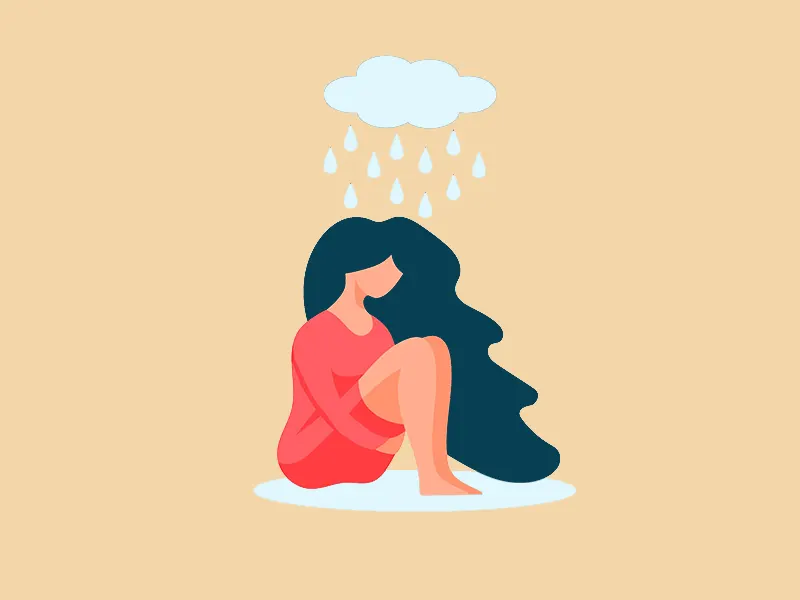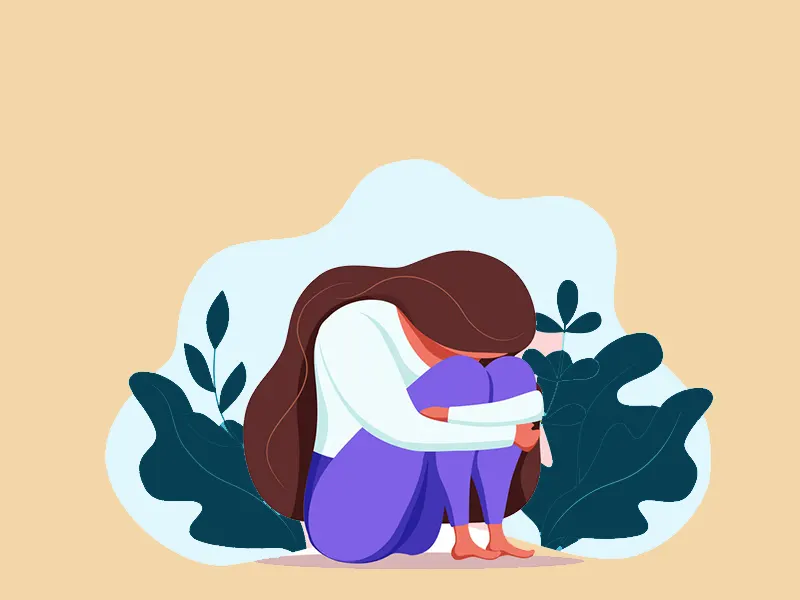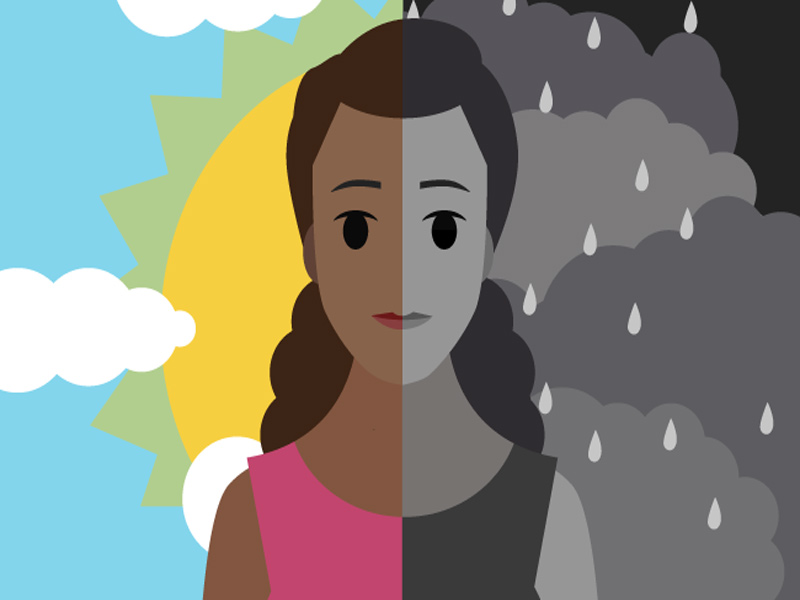You may not feel well in some months of the year and the reasons are unknown to you. Seasonal depression, which is also known as winter or summer disorder, is a type of disorder during which a person has normal conditions at other times of the year, but becomes depressed in winter or summer.
What is seasonal affective disorder?
Seasonal affective disorder (SAD) is an older term for major depressive disorder (MDD) with a seasonal pattern. This disorder is a psychological problem that leads to depression and is usually caused by seasonal changes. You may experience this condition in winter. It goes without saying that seasonal depression is more common in women and teenagers.
What are the causes of seasonal depression?
The exact cause of seasonal affective disorder or major depressive disorder with a seasonal pattern is still unknown and the effective factors vary in different people. However, people living in areas with long nights in winter (due to higher latitudes) and little sunlight during the day are more likely to suffer from this disorder. For example, seasonal affective disorder is more common in Canada and Alaska than in sunny Florida.

It is believed that light has an effect on seasonal affective disorder. According to one of the theories in this regard, the reduction of sunlight affects the body’s biological clock, which regulates the secretion of hormones, mood and sleep. In addition, people who have a hereditary background related to mental disorders are usually more at risk of contracting this disease.
What are the symptoms of seasonal affective disorder?
While seasonal affective disorder affects people in different ways, its symptoms appear mostly in October and November and end in March or late April. However, different people may feel the symptoms sooner or later.
There are generally two types of seasonal affective disorder.
- Seasonal depression in winter
- Seasonal depression in summer
Symptoms of seasonal depression in winter
- Constant tiredness throughout the day
- lack of concentration
- Feeling hopeless
- Lethargy
- Lack of interest in social activities
- Decreased libido
- Increased emotional excitability
- Weight Gain
- Discomfort
Symptoms of seasonal depression in summer
- Difficulty sleeping
- Anorexia
- Weight Loss
- Increased restlessness
- Confusion or mental restlessness
- In severe cases, people think about suicide.
What are the causes of seasonal affective disorder (SAD)?
The exact cause of seasonal affective disorder or major depressive disorder with a seasonal pattern is still unknown and the effective factors are different in different people. However, people living in areas with long nights in winter (due to higher latitudes) and little sunlight during the day are more likely to suffer from this disorder. For example, seasonal affective disorder is more common in Canada and Alaska than in sunny Florida.
While seasonal affective disorder affects people in different ways, its symptoms appear mostly in October and November and end in March or late April. However, different people may feel the symptoms sooner or later.
Treatment of seasonal depression
Use a light box
Light therapy boxes act like the sun and provide you with the necessary light. Usually, the light of this tool is brighter than the light of ordinary lamps and has different wavelengths. People suffering from seasonal affective disorder can sit in front of it for about 30 minutes a day, so that the natural rhythm (circadian) of their body is established and melatonin is released on time and in sufficient quantity. This secretion controls the body’s natural rhythm.
According to studies conducted at the University of Michigan, light therapy in the morning and after waking up is much more effective than at other times. In 2014, an article was published in the Journal of Emotional Disorders, which showed that one week of light therapy has the same effect as two weeks of light therapy, and there is no need to continue the treatment. However, people make the mistake of continuing light therapy during the season when they are sick.

Antidepressants
If light therapy or psychotherapy does not have the necessary effect on you, the prescription of antidepressants can help you. But the Royal College of Psychiatrists recommends that doctors avoid prescribing drugs that cause drowsiness. Some people think that they should use antidepressants only in the winter when they have this disorder, but these types of drugs should be used every winter. It is very important for the doctor to recognize when the symptoms of seasonal affective disorder begin and prescribe medication before the disorder worsens.
Exercise
As with other forms of depression, exercise can help improve seasonal depression. Outdoor exercise is the best kind. If you can’t exercise outdoors, get a treadmill or stationary bike and place it next to the window. It can also help offset the weight gain that is common with seasonal depression.
Take more vitamin D
Decreasing the level of vitamin D in the body is directly related to seasonal depression. Studies conducted in 2014 show that people who take vitamin D supplements will see improvement in symptoms of seasonal depression. Talk to your doctor about testing your vitamin D levels and make sure you have the right level of this vitamin in your body. Seasonal affective disorder is one of the most common disorders in regions with long winters. The causes and agents of this type of disorder are currently unknown, but it can be controlled with the help of the mentioned methods. If you or your loved ones suffer from seasonal depression, share your experiences using any of these methods with us and others.
Aromatherapy
Aromatherapy may also help people with seasonal affective disorder. Essential oils can affect the part of the brain that controls mood and the body clock and affects sleep and appetite.
Use a few drops of essential oil in the night bath. According to a 2015 article published in the Journal of Natural Medicines, fir essential oil helps with depressive disorders.
Follow a specific plan
Having a regular schedule helps you get consistent and predictable exposure to the sun. Also, eating at regular intervals will help you monitor your diet and avoid weight gain caused by seasonal depression.
People who live with seasonal affective disorder often have trouble sleeping at night and waking up in the morning. Having a regular schedule improves sleep and can help reduce symptoms of seasonal depression.
Go on vacation
Go on vacation in winter and try to make your destination warm and sunny. The purpose of this trip is to get away from everyday life. It will also change your mood. Staying in sunny areas, even for a few days, can help to cure your seasonal depression.
Keep daily notes
Writing down thoughts that have a positive effect on your mood will help you keep negative emotions away from you. The University of Michigan Depression Center recommends setting aside 20 minutes of writing time most days of the week to prevent seasonal depression. Write down your thoughts, feelings, and concerns.
The best time for this is at night, when you can reflect on all the events of the past 24 hours.
How common is depression?
The Centers for Disease Control and Prevention (CDC), a reliable source, estimates that 8.1 percent of adults age 20 and older experienced depression for at least two two-week periods each year from 2013 to 2016. This disorder is more common in women than in men. Maybe one of the reasons is that women talk more about their discomfort or express their feelings more. Most men who suffer from depression do not talk about it in order not to make themselves look sick. The prevalence of major depressive disorder is 10-25% in women and 5-12% in men. The prevalence of depression may be higher in some countries, which include poverty, food poverty, natural calamities and other things.
seasonal affective disorder (SAD)
- Constant tiredness throughout the day
- lack of concentration
- Feeling hopeless
- Lack of interest in social activities
- Decreased libido
- Increased emotional excitability
- Weight Gain
- Discomfort


